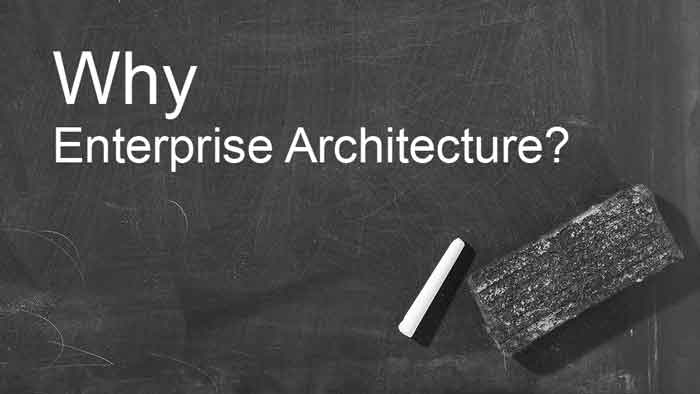Gartner mentions that “90% of corporate leaders view digital as a top priority,” and that yet “83% of leaders struggle to make meaningful progress on digital transformation.”
Various agile methodologies (scrum, kanban,…) are put in place by autonomous multi-disciplinary teams to accelerate digital transformation. Yet alone agile practices often struggle to fulfill the business strategies and goals of their company. At first glance lean and agile developments and architecture may seem to be two conflicting approaches to deliver digital initiatives, in reality they are very complementary. Enterprise Agility allows very quick reaction times and expedient delivery of initiatives in a continuous flow, which is a necessity in quickly changing business environments. Enterprise Architecture (EA) on the other hand allows you to see far enough so that you do not hit a brick wall at full speed, while you’re running with agility.
Companies that are using and making available their Enterprise architecture roadmaps within their organization understand a lot better the power of architecture to communicate adequately with their business and IT stakeholders and deliver customer-driven initiatives in conformity with the organization’s strategies.
Digital transformation (DX) driven by architecture involves mostly the following steps.
Business model development
- Clarify and disseminate goals and strategies top-down and horizontally using Business Model Canvas , Customer Value Mapping, Customer Journey Maps and/or the Business Motivation Model linking them at minimum to value streams and capabilities;
- Provide value using Value Propositions, customer-driven Value Streams and Value Stages (each value stage linked to one or several steps of a Customer Journey).
- Prioritize capabilities by examining in detail the enabling capabilities of a value stream;
- Assess and measure the problematic capabilities that are enabling a customer-driven value stream;
- Identify the gaps of each problematic capability of a customer-driven value stream from its “as is” state to its desired state;
- Elaborate expected initiative outcomes for each problematic capability
Roadmap development
- Problematic capabilities examined and measured in business architecture should be cross mapped with their enabling software applications/systems and sometimes to their other IT or non-IT assets, especially for initiatives involving Internet of Things technologies;
- All possible project scenarios delivering expected outcomes should be examined technically and budgeted revenue and costs;
- Roadmap for each scenario should also be elaborated;
- Each scenario should then be evaluated based on targeted objectives and goals, financial criteria and various risk factors; and
- Only then should a roadmap and portfolio be selected.
Agile delivery of digital solutions
- Align the enterprise architecture elements (capabilities, business processes, business rules, information concepts, organization, applications, infrastructure, etc.) involved with the selected roadmap to identify the one that will need to be modified, eliminated or changed
- Build your business requirements, epics and user stories based on the enterprise architecture elements before starting your sprints and interfacing with business stakeholders, allowing business analysts and software developers to be a lot more efficient.
The enterprise architect’s job does not end once the roadmap has been selected but make sure to make their enterprise architecture model available to all involved with the agile delivery of programs, projects and sprints, by building relationships with high level business processes, business requirements, epics and even user stories.
Contact us to learn more about the role of EA in digital transformation and meet an Enterprise Architect.
